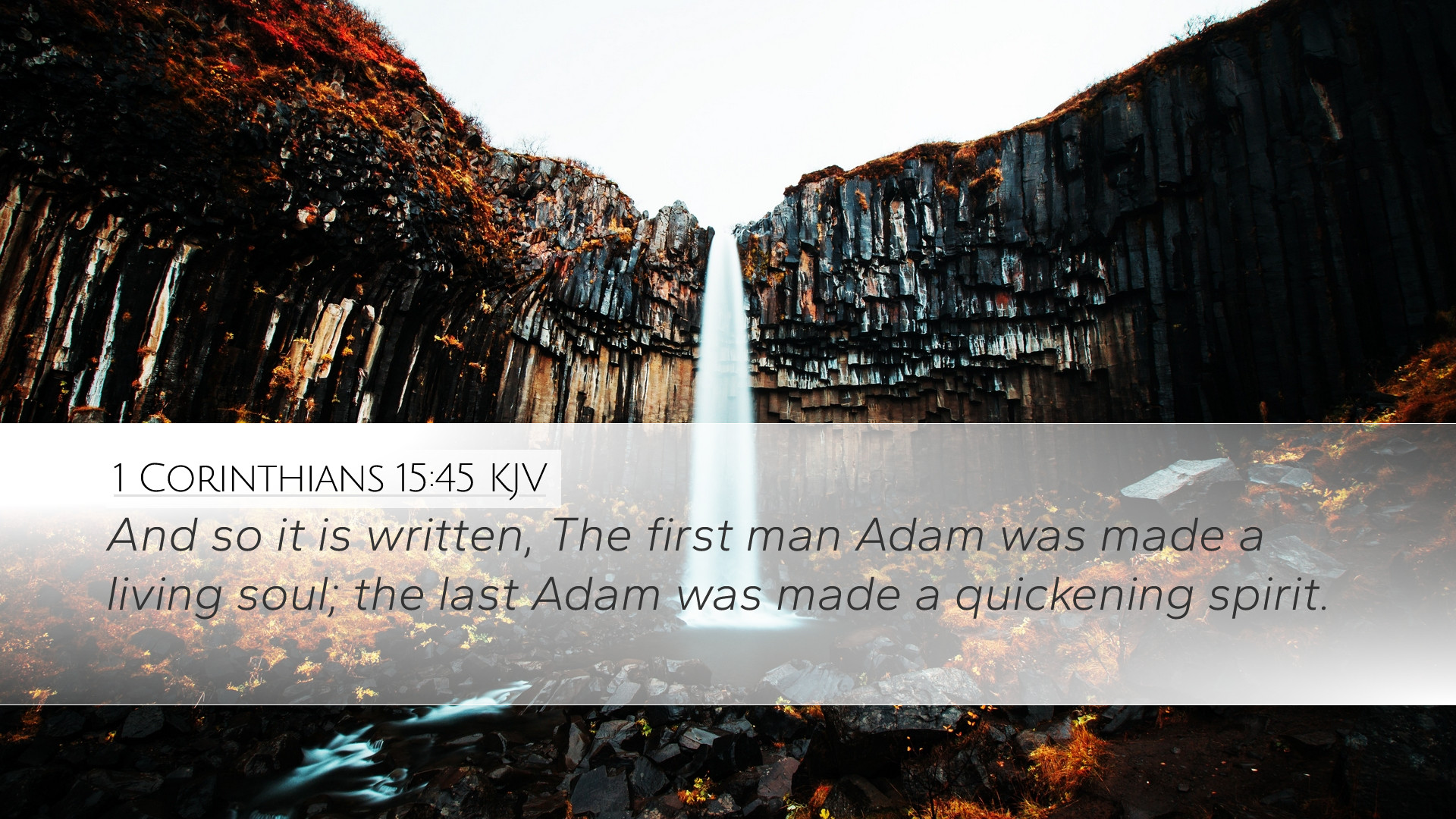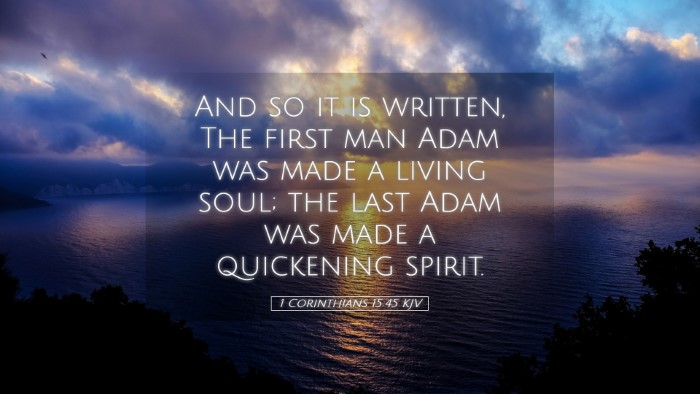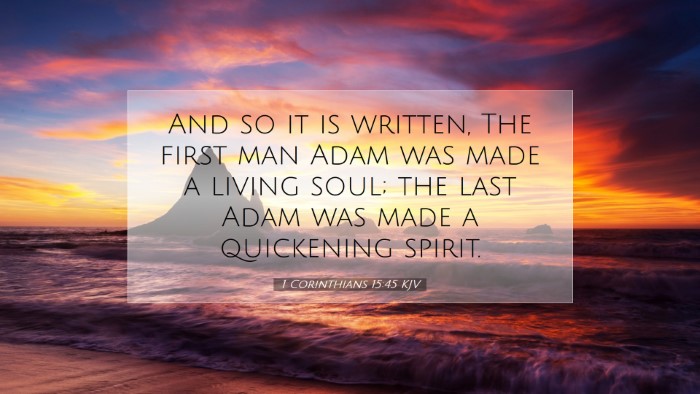Commentary on 1 Corinthians 15:45
Bible Verse: 1 Corinthians 15:45 - "And so it is written, The first man Adam was made a living soul; the last Adam was made a quickening spirit."
Introduction
This verse falls within Paul's discourse on the resurrection of Christ and humanity. The Apostle Paul draws a profound analogy between Adam and Christ, illustrating the theological concept of life through Christ in contrast to the death that came through Adam. The dualism of the first Adam and the last Adam serves as a central theme in understanding humanity's redemption and resurrection.
The First Man Adam
Matthew Henry notes that Adam is referred to as a "living soul," emphasizing that he was made in the image of God with a body animated by the breath of life. This description reflects the original state of humanity, imbued with life and spirit directly from the Creator. It underscores humanity's dignity and purpose before the Fall.
Adam Clarke elaborates that Adam's role was not merely functional but integral to God’s plan for mankind. He was created to have dominion over the earth but fell into sin, which affected all of creation. Clarke emphasizes that the "living soul" refers to Adam's ability to enjoy companionship with God and the world around him. His fall into disobedience introduced sin and death, which corrupts this original state.
The Last Adam - Christ
In contrast, Paul refers to Christ as the "last Adam" who is a "quickening spirit." Here, Albert Barnes points out that Christ embodies the ultimate fulfillment of God's promise of salvation. Unlike the first Adam, who brought death, the last Adam brings life and resurrection. The term "quickening spirit" indicates that Christ, through his resurrection, imparts life to all who believe in Him.
Matthew Henry further expounds that while Adam was created to be a living soul, Christ exists as a life-giving spirit. This transformation marks an important theological shift where Christ does not simply restore life but transcends it by offering eternal life. The resurrection of Christ is foundational for believers’ hope in their own resurrection.
Theological Implications
This verse encapsulates the doctrine of original sin and redemption. Adam Clarke states that understanding the comparison between Adam and Christ is essential for grasping the magnitude of salvation. The fall of Adam brought forth a legacy of sin that necessitated the intervention of the last Adam, so that through His resurrection, believers could receive the gift of eternal life.
Furthermore, this duality emphasizes the hope of resurrection for believers. Albert Barnes points out that just as death through Adam is a universal experience, life through Christ is also accessible to all. There’s an assurance in this text that despite the reality of death, the resurrection through Christ offers believers a new identity and purpose.
Application for Pastors and Theologians
For pastors and theologians, this verse offers rich material for preaching and teaching. The striking contrast between the two Adams provides a clear narrative from creation through fall to redemption. Matthew Henry encourages the use of this contrast to help congregations understand the seriousness of sin while also celebrating the hope found in Christ’s resurrection.
- Emphasizing Redemption: Pastors can highlight the transformational aspect of Christ's resurrection as the solution to Adam's failure, urging congregations to embrace their identity in Christ.
- Teaching Original Sin: The implications of Adam's sin can be explored to help believers grasp the necessity of grace and the gift of salvation.
- Encouraging Resurrection Hope: This passage serves as a powerful reminder for believers about their future resurrection and eternal life in Christ.
Conclusion
In summary, 1 Corinthians 15:45 serves as a profound text that encapsulates the believer's journey from the first Adam, who represented death, to the last Adam, who embodies life. By combining insights from various public domain commentaries, we deepen our understanding of this pivotal verse. The theological richness encourages ongoing reflection and application in the lives of believers, calling them to live in the light of their resurrected life in Christ.


